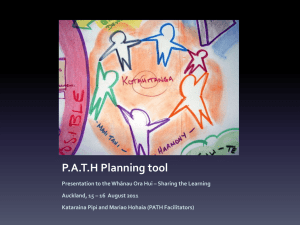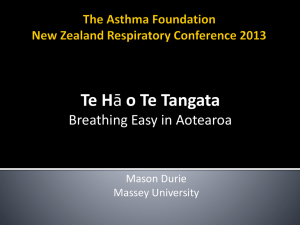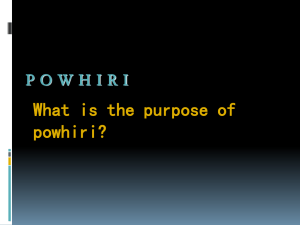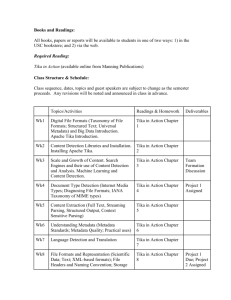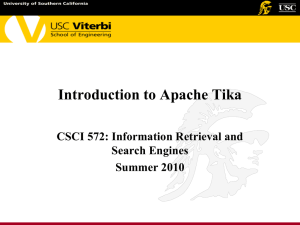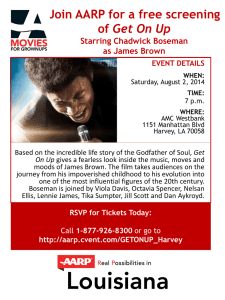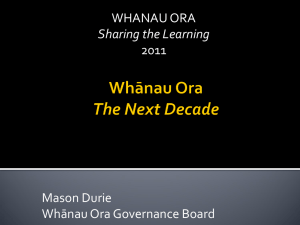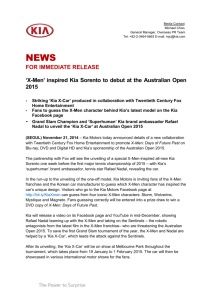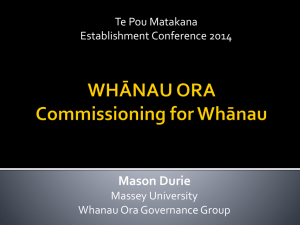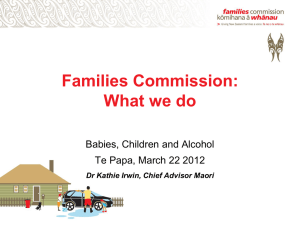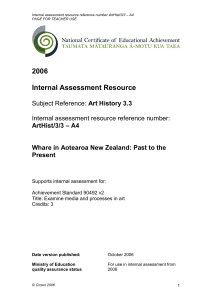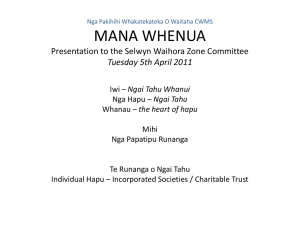Te Taonga Tukunga Iho o Te Pu O Te Wheke
advertisement
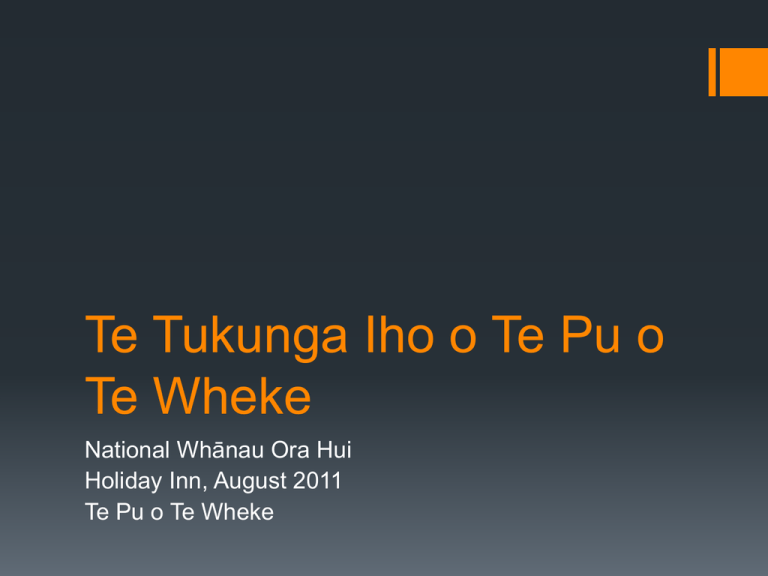
Te Tukunga Iho o Te Pu o Te Wheke National Whānau Ora Hui Holiday Inn, August 2011 Te Pu o Te Wheke Te Pu O Te Wheke – Ko Wai Matau? Hauora Hokianga Health Trust Ngāpuhi Iwi Social Services Te Hau Ora O Kaikohe Charitable Trust Te Kotahitanga E Mahi Kaha Trust Te Runanga-A-Iwi-O-Ngāpuhi Te Runanga O Whaingaroa Whaingaroa Health Services Trust Kia tu tika ai te whare tapu o Ngāpuhi Kia tu tika ai te whare tapu o Ngāpuhi Our Outcomes Healthy whānau Safe Whānau Economically Secure Culturally Connected Self-Managing Kia tu tika ai te whare tapu o Ngapuhi Geographic Region Kia tu tika ai te whare tapu o Ngāpuhi Our experiences of the past Competing for clients and contracts. Most services focused on one central area. Lots of service providers involvement but poor progress. Kaimahi initiatives to work collaboratively unable to sustain support due to external factors and constraints. Few development initiatives which are mostly prescriptive non Māori models and don’t quite suit. Contracts don’t always suit tikanga or whānau paradigms. Large area of mahi around whānau/hapu engagement not funded. Working in isolation in a culture of industry defensiveness. Huge gulf between social services and social development. Individual success stories but with huge effort to achieve. Kia tu tika ai te whare tapu o Ngāpuhi Where are we now? Acknowledging this is the first time we have worked together – we are in the inception stage. Formative stages of whanaungatanga Realising the strengths we have individually, and using these to become a strong collective for whānau Sharing of information Been given an opportunity from government – the ability to exercise our own methods Collective strategies lead to collective outcomes Creating a service Hub in Kaikohe A strong determination to closely link social and health services to whānau development. Kia tu tika ai te whare tapu o Ngāpuhi Our Outcomes Healthy whānau Safe Whānau Economically Secure Culturally Connected Self-Managing Kia tu tika ai te whare tapu o Ngapuhi How are we going to achieve our outcomes? Each person, organisation, programme, service within the collective contributes to these outcomes Collaboration is not the end, it is only a means Are whānau better off from the mahi we are doing? Getting value for money across the collective Working with our partners Ensuring our mahi links to our outcomes Kia tu tika ai te whare tapu o Ngāpuhi Whānau Engagement Mauri Ora – A tikanga based framework that enables kaimahi to develop their own solutions when dealing with issues that arise within whānau, hapū, iwi, based on an understanding of tikanga and using those cultural principals to work on transformative outcomes. RBA – Results Based Accountability RBA is a results-focused approach that offers a fresh perspective on measuring performance. Its framework helps identify what a social service provider and their kaimahi do well, where they can improve and how their mahi contribute to improving outcomes for whanau, hapu and Iwi. Kia tu tika ai te whare tapu o Ngāpuhi DOW - Dynamics of Whanaungatanga The Dynamics of Whanaungatanga is a cultural framework that provides understandings on concepts and principles of whanaungatanga to enhance personal skills and actions on how to maintain whanaungatanga, Tapu and Mana. PATH – (Pathways of Alternatives Tomorrows of Hope) The PATH is a creative visual planning tool that helps individuals, groups, and whānau reflect upon where they are in terms of their current goals and dreams, their uniqueness, attributes and strengths, and their aspirations for the future. It is inclusive structured and systematic process that empowers and promotes unity. The future Become a leader provider/collective others want to aspire to Goes beyond service delivery – becoming a state of mind for us all Develop and test tikanga-based, Ngāpuhi models of practice Centralised support services for organisational cohesion, cost reduction and improved efficiency Assess & strengthen existing capability and capacity Develop consistent policies and procedures Design, develop, test and establish Whānau Ora practitioner roles. Develop a whānau centred workforce that is highly effective, efficient and focussed on high quality outcomes across the collective. Kia tu tika ai te whare tapu o Ngapuhi Information System Strategic Planning (ISSP) Four major sections of the ISSP report Business strategy and future requirements The current state of information services Information Services Strategy and future state Transition strategy and the information services development programme Kia tu tika ai te whare tapu o Ngapuhi
